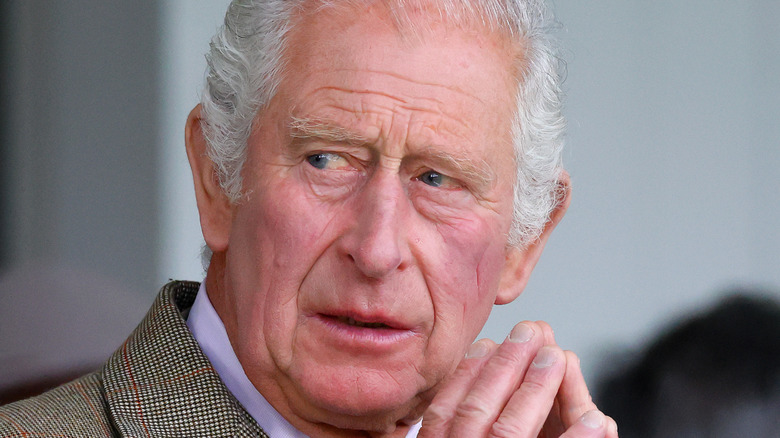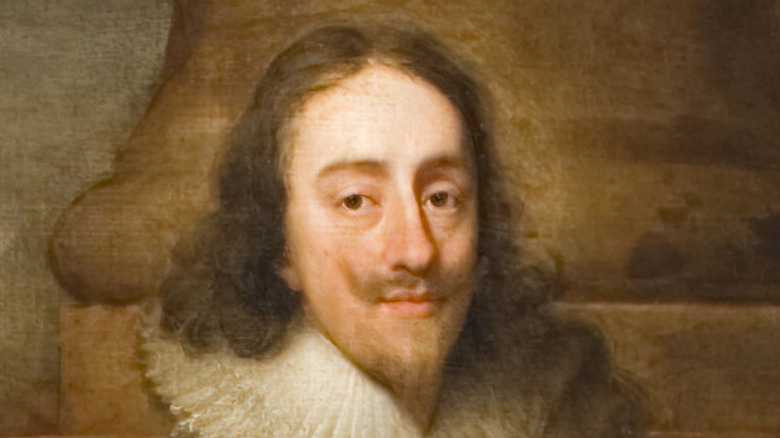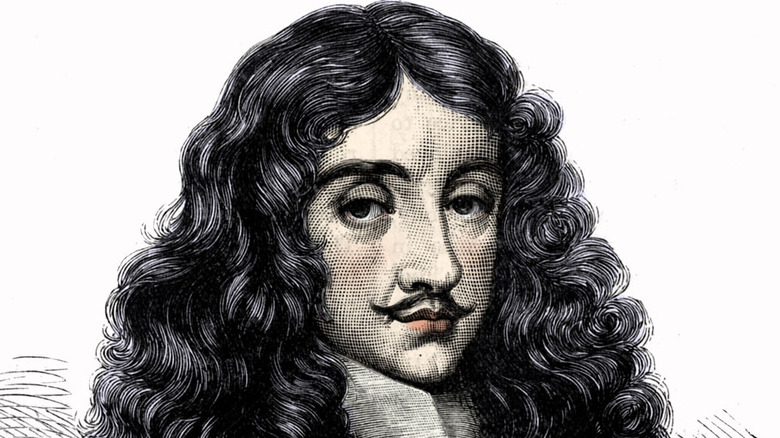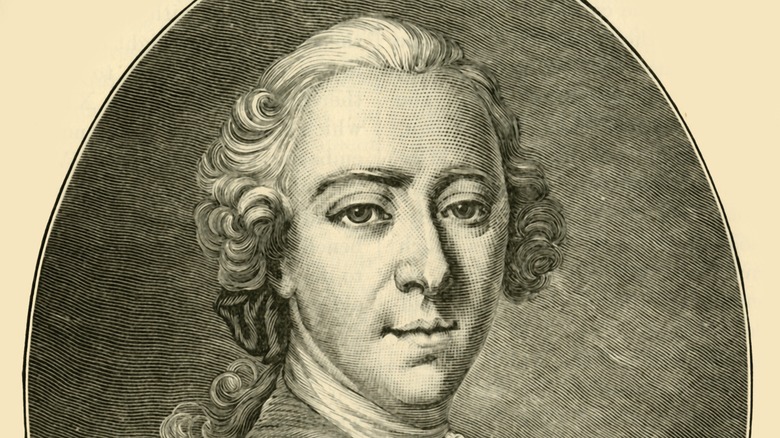Why King Charles' Royal Name Is Already Cursed
Immediately following the heartbreaking death of Queen Elizabeth on Sept. 8, 2022, her eldest son, Charles, became king, per BBC. No longer the Prince of Wales, he's now King Charles III. Born Charles Philip Arthur George, the new king could have used any of those names for his new royal title, or regnal name.
For his mother, a princess at the time of her ascension, her decision was easy. "My own of course — what else?" Elizabeth responded, per Royal Central. However, when her father became king, he took a different path. Prince Albert became King George VI — a symbol of continuity and nod to his father, George V (via The Times).
Over the decades, there's been speculation about Charles' choice of regnal name. In 2005, two of his friends indicated that Charles was leaning toward a different choice. "[The royal family] will decide at the time, but he has talked about George," one friend told The Times.
However, another friend took the opposite point of view. "Anyone who knows the Prince of Wales knows he does not sit around talking to his chums, discussing what he wants to be called," they told The Guardian. "Inasmuch as officials have discussed it with him at accession planning meetings the thinking was that he would remain Charles."
While King Charles III was the name he was expected to choose, the moniker does come with some heavy historic baggage.
Civil War caused King Charles I to lose his head
The name King Charles is considered cursed by some people, given its associations with the English Civil War, per the New York Post. "Monarchs called Charles have not had much luck," genealogist Patrick Cracroft-Brennan told The Times in 2005. "One was beheaded, one was in exile, and one was a pretender to the throne."
King Charles I began his reign in 1625 and often found himself in conflict with Parliament, per Royal.uk. His hobby of collecting expensive art and his disastrous decision to incite war with France and Spain racked up some serious debt.
According to the Royal Museums Greenwich, Charles' insistence on the "divine right of kings" polarized his relationship with Parliament and his subjects. When Parliament disagreed with the king, he eliminated it and made all the governing decisions himself. At one point, Charles I ruled alone without Parliament for 11 years.
By 1642, England was embroiled in a civil war between pro-Parliament Roundheads and pro-monarchy Cavaliers, per Historic UK. After Charles was captured four years later, unrest continued, leading to a brief second civil war in 1648.
By January 1649, Charles was tried and convicted of high treason. Before he was beheaded, he called himself "the martyr of the people" (via Royal.uk). While not everyone agreed with this assessment, after more than 300 years, Charles still has some fans who take time to place a wreath at his statute and commemorate the anniversary of his death.
King Charles II had a scandalous love life
Unlike the new king of England, Charles III, Charles II did not assume the role of monarch when his father died. According to Royal.uk, an act of Parliament prevented the succession. The conflict over governing authority between Parliament and the monarchy was so great that the position of king was eliminated.
After his successes in battle during the English Civil Wars, Oliver Cromwell assumed the role of head of state from 1653 to 1658, per History.com. After his son's unsuccessful attempt at the job, sentiment turned toward re-establishing the monarchy.
Charles had been crowned as king in Scotland in 1651, and, by 1660, he returned to England to officially restore the throne. Besides enduring nine years of exile in Scotland, Charles spent his youth in France to escape the war (via Royal.uk).
Like his father, Charles also had some conflicts with Parliament. He ruled solo for his final four years after dissolving Parliament, per The Telegraph. In addition, his personal life became a public scandal, earning him the name "Merry Monarch," as a nod to his numerous mistresses (via The Times).
According to Royal Museums Greenwich, Charles' lovers included a married woman, Barbara Villiers, and an actress and former orange seller, Nell Gwyn. While Charles had two children with Villiers, he may have had as many as 12 illegitimate children in all, per Hello! Magazine. This lack of legitimate heirs caused the crown to pass over to his brother James.
There was even a previous Charles III in UK history — sort of
In the 1700s, Prince Charles Stuart, known as "Bonny Prince Charlie," claimed he was supposed to be king rather than George II. As such, he would have been known as Charles III, per Sky History. Also called "The Young Pretender," the prince made a serious bid for the throne during the Jacobite Rising of 1745. Charles was the grandson of James II, and Charles II was his great uncle.
Born in Italy, Charles spent 14 months in England from 1745 to 1746, with a brief return in 1750 (via BBC). After he was defeated during the decisive Battle of Culloden in 1746, his ambitions of becoming king ended.
According to The Jacobite Trail, while Charles was known for his debonair appearance as a young man — hence the "bonny" nickname — his appearance and personality were impacted by the crushing disappointment of his failure to become king. Charles became angry and bitter, struggled with alcoholism, and abused his wife and girlfriends. He died in Rome at age 67 after suffering a stroke.
Despite his tumultuous life, after his death, he became part of a growing romantic literary tradition, per BBC. The Bonny Prince was immortalized in songs such as "The Skye Boat Song," written in the 1880s.
We can only hope that the new King Charles III has a more positive and prosperous reign than his predecessors.



